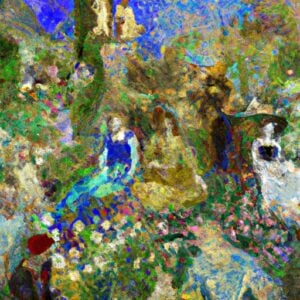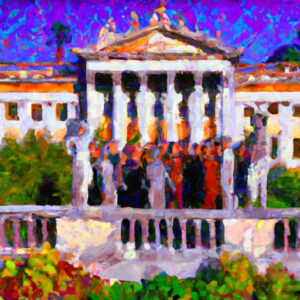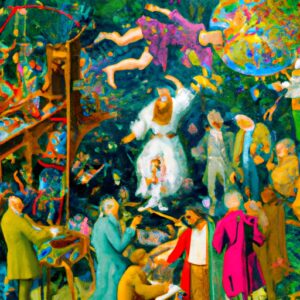Is Italy a Country?
Some may think that Italy isn’t an independent country but part of the EU. However, that’s not like this.
In recent years, the European Union (EU) has made it possible to travel around many European states without the need for a visa or a passport check at the frontier.
This, however, may generate some confusion among foreigners, especially those who live far away from the European continent.
Italy is a country with its government and legislation.
On the other side, the EU is a political and economic association among different European states, among which there’s Italy.
When did Italy become a country? What’s its political and administrative structure?
What’s the history of Italy? Let’s break it down.
Where is Italy on the World Map?
Italy is situated in the Northern Earth hemisphere; more precisely, it’s one of the Southern states in Europe.
The country is a peninsula surrounded by the Mediterranean Sea and divided from the European continent by the vast mountain range of the Alps.
Although they are physically separated from the rest of the country, the two islands of Sicilia and Sardegna (Sicily and Sardinia) belong to Italy as well.
Italy borders France, Switzerland, Austria, and Slovenia.
The position and geography of the country have made Italy a strategic point all over the centuries.
Its position was highly favorable to commercial exchanges and trades, and the beauty and fertility of Italian lands attracted invasions throughout history.
When did Italy become a Country?
Italy became a country in 1861 after centuries of invasions, civil wars, and colonizations.
Before that date, Italy had been divided for centuries, with many independent states, and reigned under different dominations.
This situation created social and political instability and inner tensions, culminating in the independence movements in the XIX century.
It is complicated to unravel the history of this complex and turbulent country; however, some pivotal moments can help you understand Italian history throughout the centuries.
Italy: the Early Years
Italian history dates back to ancient times. Invasions and colonization from different populations have characterized it.
The name Italy comes from the Italics, an Indo-European population that came to Italy from Eastern Europe.
The most famous stage in Italian history is perhaps the rise of the Roman Empire. But, before the Romans, several populations inhabited Italy.
For example, there were the Celts in the North. They came from Northern Europe and founded the city of “Mediolanum”, the first nucleus of modern Milano.
Since ancient times, Italy has been subjected to colonization. The primary example comes from the Greeks, who established in the South and founded several colonies in Sicily, Calabria, Apulia, and Campania.
These colonies became so flourishing that they were known as “Magna Graecia” (literally, the “Big Greece”). The Magna Graecia period started in the 8th century BC and endured until the rise of the Roman Empire.
Meanwhile, in Central Italy (more precisely, between the regions of Tuscany and Lazio), another civilization was born: the Etruscans.
The Etruscan civilization fostered cultural and social development, and it came to witness the early days of the Roman Empire, which was responsible for their end.
Today, you can still visit some well-preserved remains from the Etruscan time, especially in the Northern part of the Lazio region: the necropoli (literally, “city of deads”) in Tarquinia and Cerveteri.
In 753 BC, a pivotal moment changed the shape of the Italian peninsula and maybe of the whole occidental world: the foundation of Rome.
The foundation of Rome: the legend of Romulus and Remus
The foundation of Rome was such an essential event that several ancient legends were born around it.
The most popular one is the legend of Romulus and Remus (in Italian, Romolo e Remo).
According to it, Rome was founded in 753 BC by Romulus, a direct descendant of Eneas, the Trojan hero who escaped from Troy after the defeat in the war with Greece.
The legend says that Romulus and Remus were twins born from Rea Silvia and Mars, the God of war.
After their birth, Rea Silvia died. The twins were abandoned in a basket in a river.
But their fate was not to die: they were saved by a female wolf, who bred them for some time.
Afterward, a shepherd named Faustolo found the twins and adopted them.
When they became adults, they learned about their royal ancestors and felt the right to find a new city to comply with their divine ancestry.
Romulus and Remus founded a city in the lands where they were born. It was also a way to honor the wolf who saved their life.
Once they founded the city, they couldn’t decide who would rule it: they were twins, so they both had the same right.
A version of the legend says that the two brothers built a division wall to divide their reign. But Remus climbed over the wall, so Romolo killed him and became the city’s ruler, which was called Roma in his honor.
The Roman Empire lasted for around five centuries, from 29 BC to 476 AC, and expanded worldwide, arriving in Asia, Eastern Europe, and Northern Europe.
The Empire fell in the 5th century AC when Barbarian troops conquered it.
Italian History from the Middle Ages to Unification
Since the fall of the Roman Empire, Italian history has been constellated by a myriad of invasions: among them, there were the Byzantines, the Longobards, the Normans, the Arabs, the Spanish, the French, and the Austrians.
The fall of the Roman Empire had significant consequences on the language, too. Latin stopped being the official language, and the first nucleus of the Italian language was born.
Italian history after the fall of the Roman Empire and before the country’s unification is turbulent and complex. Italy was not a unified country, but it underwent a series of social and political transformations that gave birth to several states, republics, and reigns with their own legislation.
Italy was characterized by countless invasions, political instability, and governmental fragmentation during those centuries.
The best way to understand the political situation that was going on in Italy was to focus on each part of the country and analyze it differently.
In the North, there were mainly Ducati (duchies) governed by a duke. Examples are the Ducato di Savoia in the Piedmont region and the Ducato di Milano in Lombardy.
The city center was under the Church’s control: the Papal States lasted until 1870 (when Rome was annexed to Italy). In 1929, the Vatican City was born: it was an independent state inside the Italian territory administered by the Catholic Church.
In the South, different invasions alternated: Normans, Arabs, French, and Spanish. They established reigns administered by different kings and alliances.
Also, it is interesting to notice the birth of the Repubbliche Marinare (literally, “Maritime republics”). They were Genoa, Amalfi, Venice, and Pisa, and they based their economy on maritime trades and relationships with maritime towns all over the Mediterranean Sea.
Without a doubt, the political situation in Italy before its unification was complex, unstable, and fragmented.
The Unification of Italy
After centuries of foreign oppression, the Italian population was tired of invasions. At the beginning of the XIX century, some Italians gathered together to spread ideas about independence.
The Carboneria was the first nucleus of fighters for independence. Revolts followed it in several parts of the country.
The wick was lit: in 1848, a series of revolutions led to the First Italian War of Independence, followed by a second war some years later and by the expeditions of the Mille led by Giuseppe Garibaldi.
The expeditions had the aim of conquering all the various reigns and unifying them under a monarch.
In 1861, Italy became a unified country under the reign of the Savoy dynasty.
Meanwhile, Rome was still under the Pope’s control as a part of the Papal States. In 1870, the Italian troops conquered Rome, which became the new capital of Italy in 1871.
After the unification, Italy was first a Monarchy under the Savoy dynasty; then, after World War II, a national referendum proclaimed it a Republic (Repubblica Italiana), whose first president was Enrico De Nicola.
Italy: Country Profile
Today, Italy is a Republic and is administered by:
- a Parliament, which elects the President of the Republic and writes the laws.
- a Government that applies the rules and makes sure the population respects them.
- a Magistratura, which is responsible for keeping justice in the country.
The President of the Republic is a representative figure that guarantees the country’s unification.
The capital of Italy is Rome, which is the largest city in Italy and the country’s administrative and political center.
Euro (EUR) is the Italian currency; it is the official currency of 19 states members of the European Union.
It is famous for its culture, cuisine, and art: monuments and museums are everywhere, making this country an outstanding destination for tourists worldwide.










One Response
Italy is a beautiful country located in Europe and it is also a member of the European Union. It has a rich history, delicious food, and stunning landscapes. You would definitely love visiting Italy!